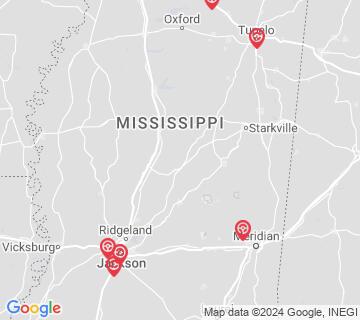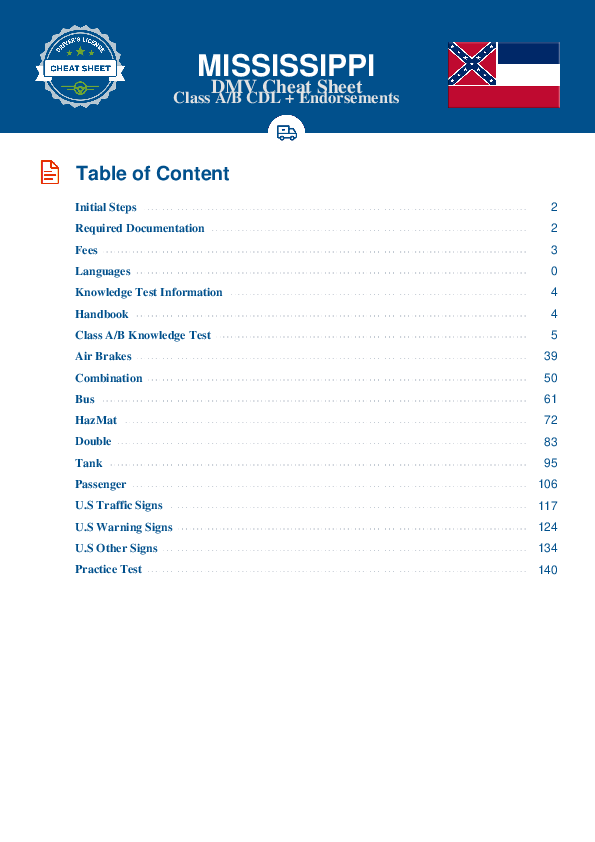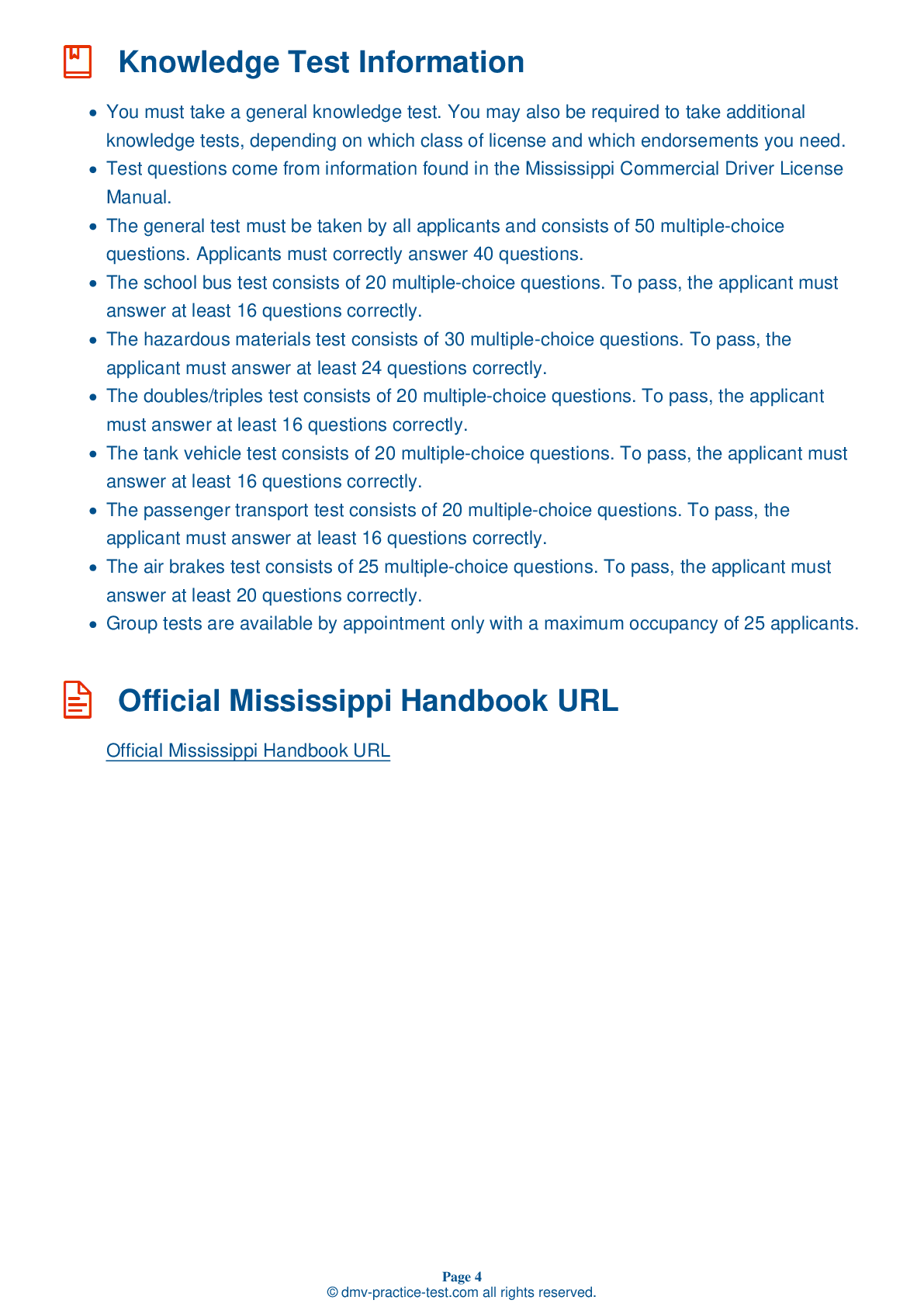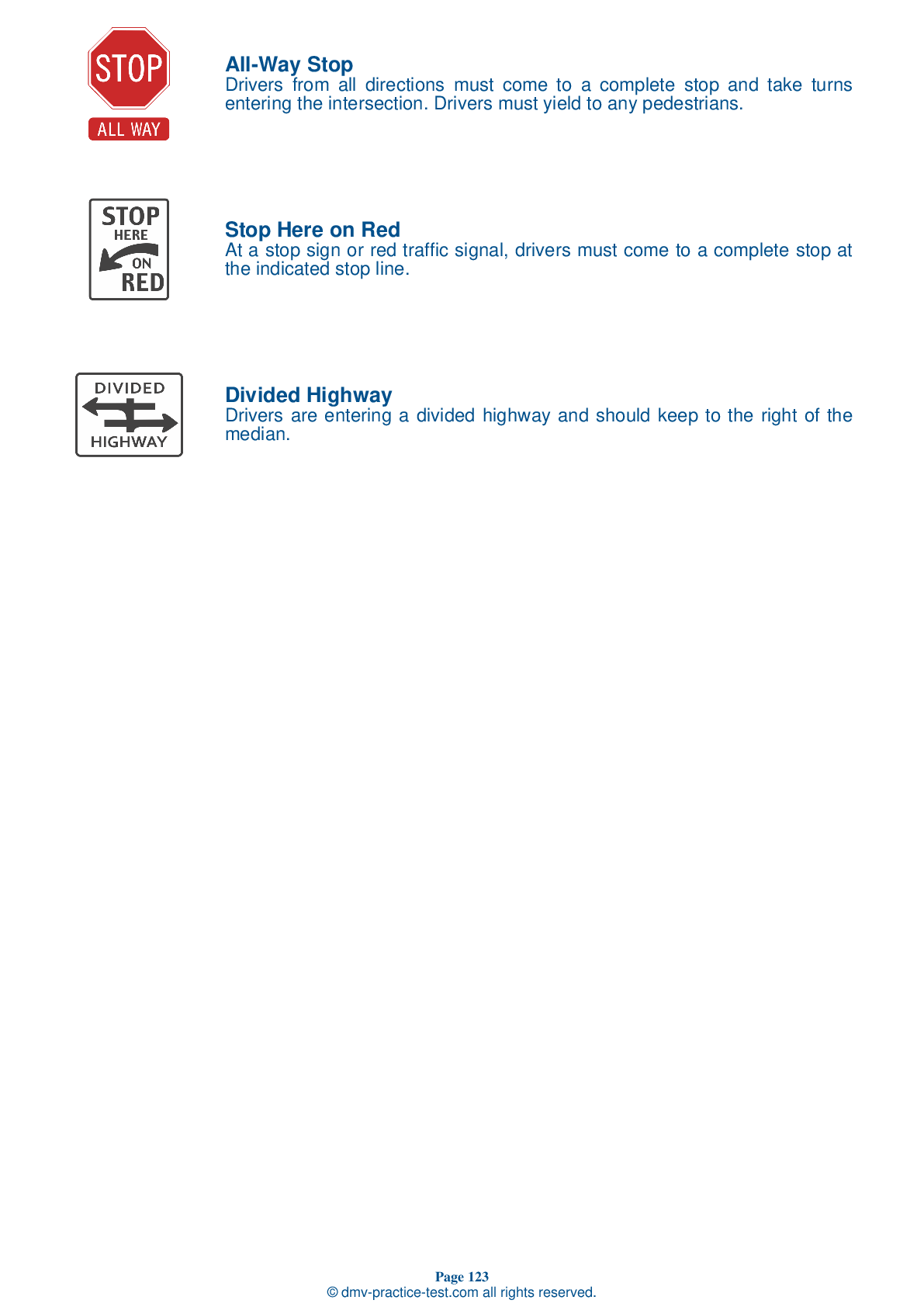Knowledge Test Class B #1
Class B Driving Test | Mississippi 2025 #1 Page 3 of 7
Train for FREE online with our Mississippi class B license test. The official exam test consists of several obligatory parts, with all of them checking your knowledge of different blocks of road rules. If you need to obtain a MS CDL class B permit in 2025, practice as much as possible. Free sample tests published on our website will help you check and improve your knowledge and boost your grades. Please bear in mind that CDL class B requirements may vary from state to state.
50
40
20
15 . Some air brake systems use alcohol:
To reduce the risk of rust forming on air brake valves.
Some air brake systems contain an alcohol evaporator. This device introduces alcohol into the braking system to inhibit the formation of ice.
16 . When making a tight maneuver, you should:
Rely only on your mirrors.
Make a point of checking your mirrors often when making tight maneuvers.
17 . If involved in a crash, basic procedures should include all of the following, except:
Driving away without stopping.
If you are involved in a crash, the three basic things you need to do are protect the area, notify the proper authorities, and care for anyone injured. It is important to protect the accident site immediately after the accident occurs to help prevent another crash from happening in the same location.
18 . How much water must be present for a vehicle to hydroplane?
None
Hydroplaning is a phenomenon during which a vehicle's tires lose traction with the road surface and begin to glide along on water on the road. There does not have to be a large amount of water on the road for this to occur.
19 . While driving, gauges are:
While driving, you should watch your vehicle's gauges for signs of trouble. Be sure to inspect your gauges before beginning a trip to ensure that they are in proper working order.
20 . How can you check hydraulic brakes?
Check hydraulic brakes by pumping the brake pedal three times before applying firm pressure to the pedal for five seconds. The pedal should not move. If it does, there may be a leak or some other problem in the braking system.
21 . If the low pressure warning light comes on while you are driving:
You should continue driving, but turn the emergency flashers on to warn other motorists.
If the low air pressure warning light turns on, you should stop and safely park your vehicle as soon as possible. Controlled braking will be possible only as long as enough air remains in the tanks.
Search the best driving school in your neighbourhood
2025 Mississippi | Frequently Asked Questions
A CDL Class A license in Mississippi allows the holder to operate any combination of vehicles with a Gross Combination Weight Rating (GCWR) of 26,001 pounds or more, provided the Gross Vehicle Weight Rating (GVWR) of the vehicle(s) being towed is over 10,000 pounds. This typically includes tractor-trailer combinations.
A Class A CDL license in Mississippi permits the operation of vehicles such as tractor-trailers, truck and trailer combinations, tank vehicles, livestock carriers, and flatbeds. Basically, it covers any combination of vehicles with a gross combination weight rating (GCWR) of 26,001 pounds or more if the towed vehicle is over 10,000 pounds.
To obtain a Class A CDL in Mississippi, you must be at least 21 years old (18 for intrastate travel), possess a valid Mississippi driver's license, pass a vision test, and complete a written knowledge exam. You'll also need to pass skills tests in a vehicle representative of the class you're applying for, and meet medical requirements.
In Mississippi, you must be at least 21 years old to qualify for a Class A CDL license for interstate driving. However, you can be 18 years old to apply for a CDL for intrastate driving, which limits you to driving within the state of Mississippi only.
Endorsements aren't required for a Class A CDL license, however, they can enhance your license. They allow you to drive specific types of vehicles like tank vehicles, passenger vehicles, school buses or transport hazardous materials. To get an endorsement, you must pass additional written and skills tests related to the specific type of vehicle.
The Class A CDL skills test in Mississippi encompasses three sections: a pre-trip vehicle inspection, a basic vehicle control test, and an on-road driving test. These tests evaluate your ability to inspect your vehicle before the trip, control the vehicle during typical maneuvers, and drive safely in various road and traffic conditions.
Yes, there are limitations. Class A CDL license holders in Mississippi may be restricted based on the type of vehicle they tested in. For instance, if the test was taken in an automatic vehicle, they can't drive a manual truck. Other limitations could be related to air brakes, passengers, tank vehicles, and hazardous materials.
In Mississippi, the written Class A CDL test is generally conducted in English. However, some states may offer the test in Spanish. Non-English speakers can usually use a dictionary or bring an interpreter. It's important to check with the local DMV office for specific language accommodations. Remember, federal regulations require all CDL holders to read and speak English.
Yes, you can request accommodations for the Class A CDL written test if you have a disability. Mississippi's Department of Public Safety works to ensure accessibility for all test-takers. Accommodations may include extra time, a separate testing room, or assistive technology. You should contact your local testing center in advance to discuss your needs and arrange accommodations.
Yes, if you don't pass the Class A CDL written test in Mississippi, you can retake it. However, you may have to wait a specified period before you can reattempt it. It's also likely that you'll have to pay a retesting fee. Check with the Mississippi Department of Public Safety for specific rules and regulations regarding retakes.




